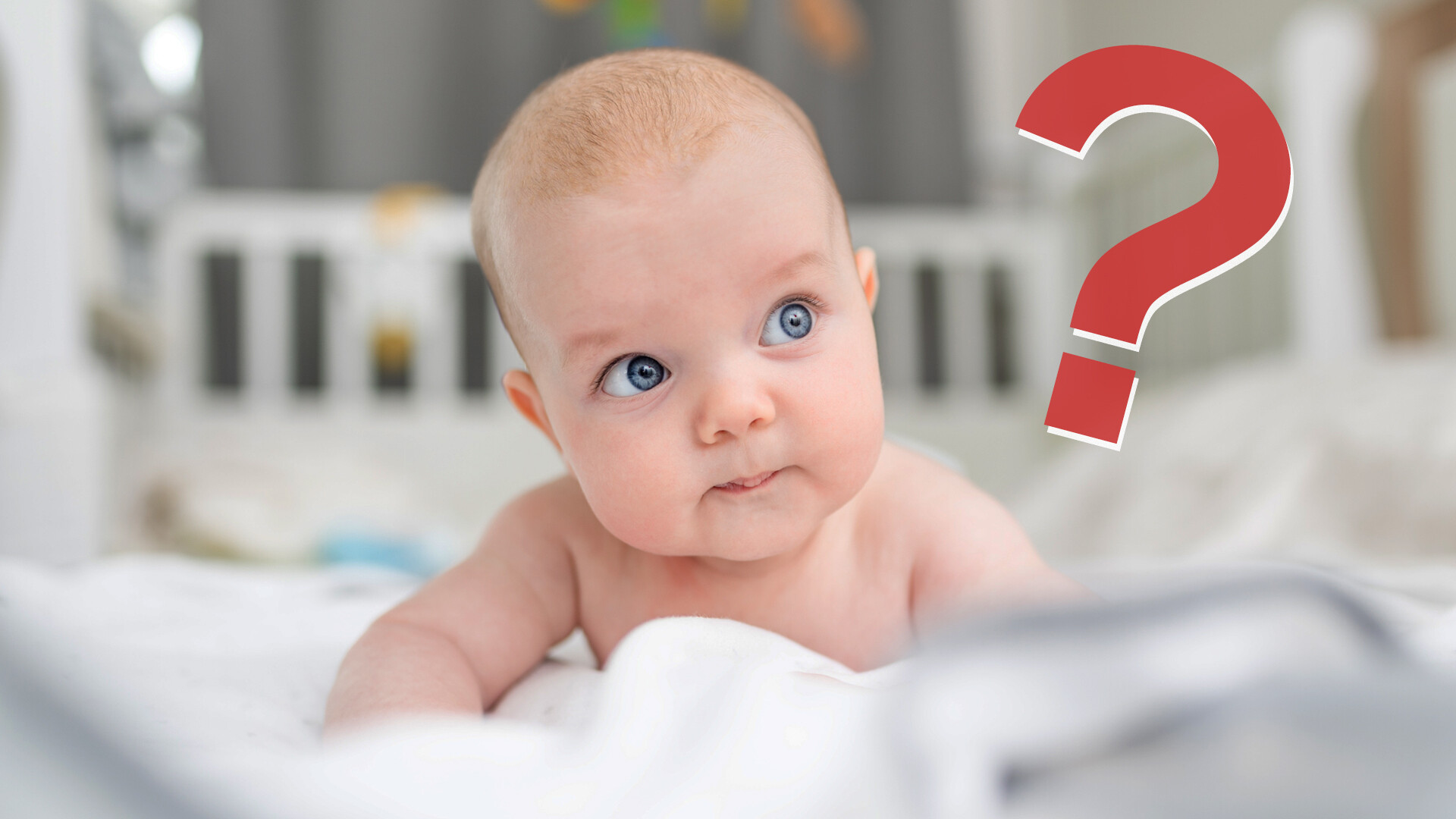
Russia has quite a large amount of support programs for families that have newborn children. Regardless of the place of birth, Russians receive federal benefits, as well as each region providing its own additional bonuses.
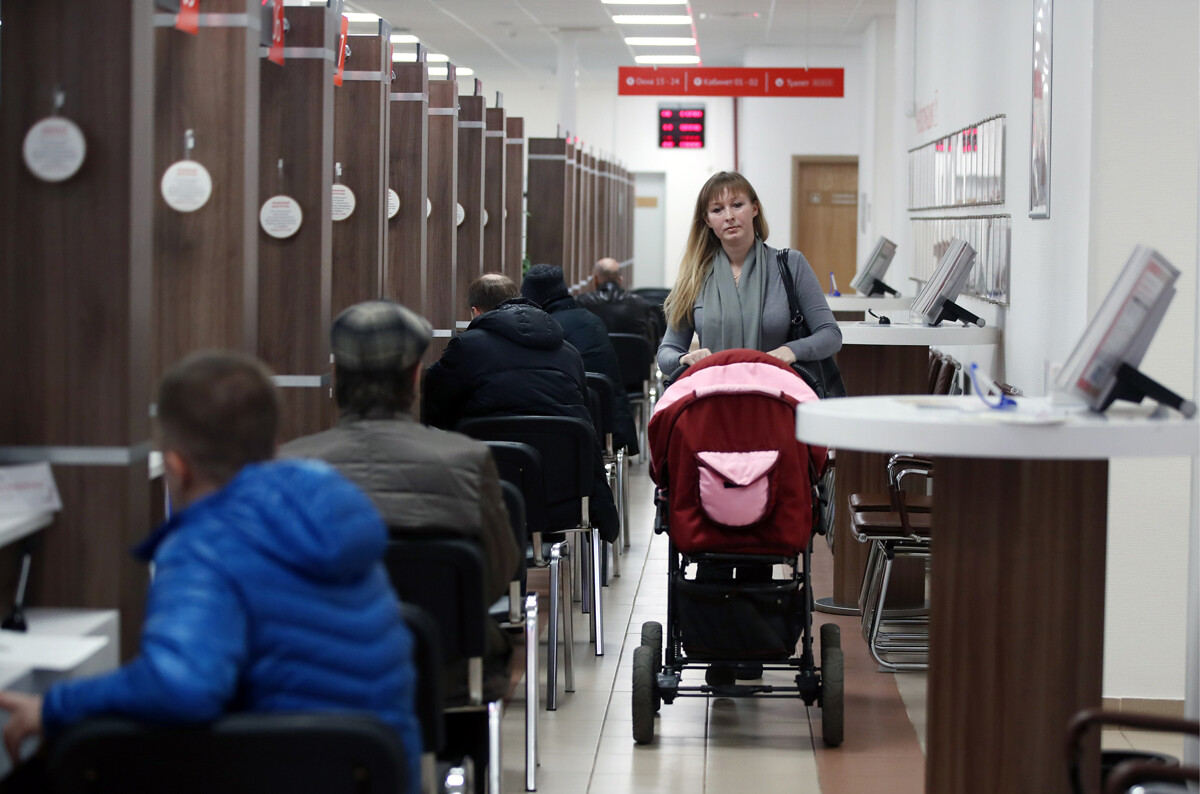
The main federal payment is the maternity capital, which you can spend on purchasing an apartment, building a house or your child’s education. In 2023, it amounts to 586,946 rubles (approx. $6,000) for the first child and 775,628 rubles (approx. $7,970) for the second child, if the mother didn’t receive maternity capital for the first child; if she did, the second payment is 188,681 rubles (approx. $1,940).
Aside from that, there’s also a one-time payment of 22,909 rubles (approx. $235) in 2023. However, you must apply for it within six months of the child’s birth.
From the moment the child is born until they reach the age of 18 months, their mother (or father) is eligible to receive a monthly child care allowance – 40% of the average income, but no more than 33,281 rubles (approx. $340).
There are additional payments for both low income families and families with multiple children. But, the sum will be different depending on the region.
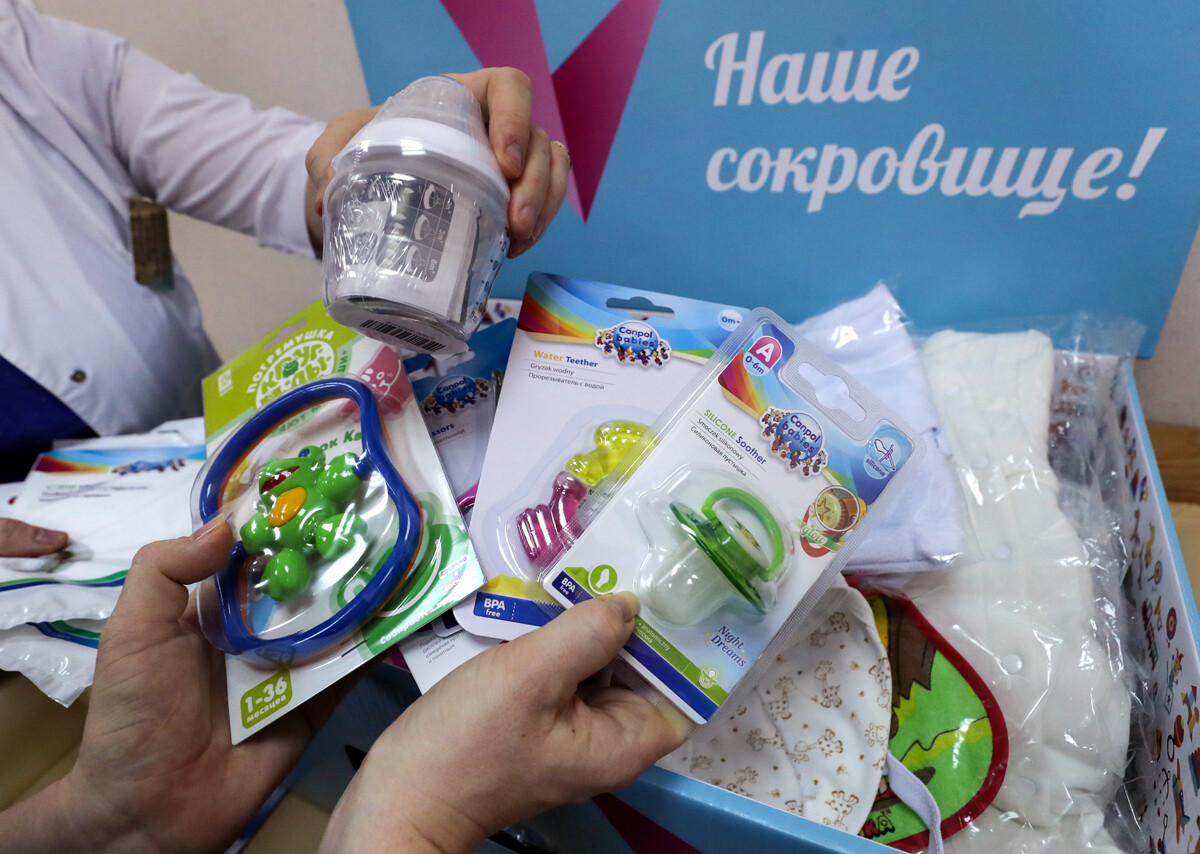
A box for kids in Moscow.
Valery Sharifulin/TASSIn approximately 30 regions of Russia, young parents receive packages with necessary baby items when they have a child. Moscow became the first among such regions, with others following soon after. The packages are different everywhere, but, usually, all the items provided have neutral colors that would fit a baby of either gender.
In Moscow and Moscow Region, the packages are large boxes with clothes, diapers, thermometers, bed sheets, bathing sets, etc. You can opt not to take the package and receive a 20,000 ruble payment instead (approx. $205). However, some Moscow parents have noted that the package contents cost approximately the same (if bought separately in a store) and the items provided are of good quality.

A gift box in Yamal.
Yamalo-Nenets Autonomous Okrug Governor's Press ServiceYoung parents from the Yamalo-Nenets Autonomous Okrug receive a large package with the symbol of the region – a polar bear – on it. Inside, apart from diapers, bottles and bed sheets, you can find winter overalls, warm winter hats and a thick blanket. And everything is decorated with similar cute bears that you wish you were born in Yamal! You can also opt out and choose a certificate for purchasing baby items with a value of 32,000 rubles (approx. $330).
There’s also something called ‘chum capital’ on the Yamal Peninsula, where the families of indigenous people of the North live (the Nenets, the Khanty and the Selkups).
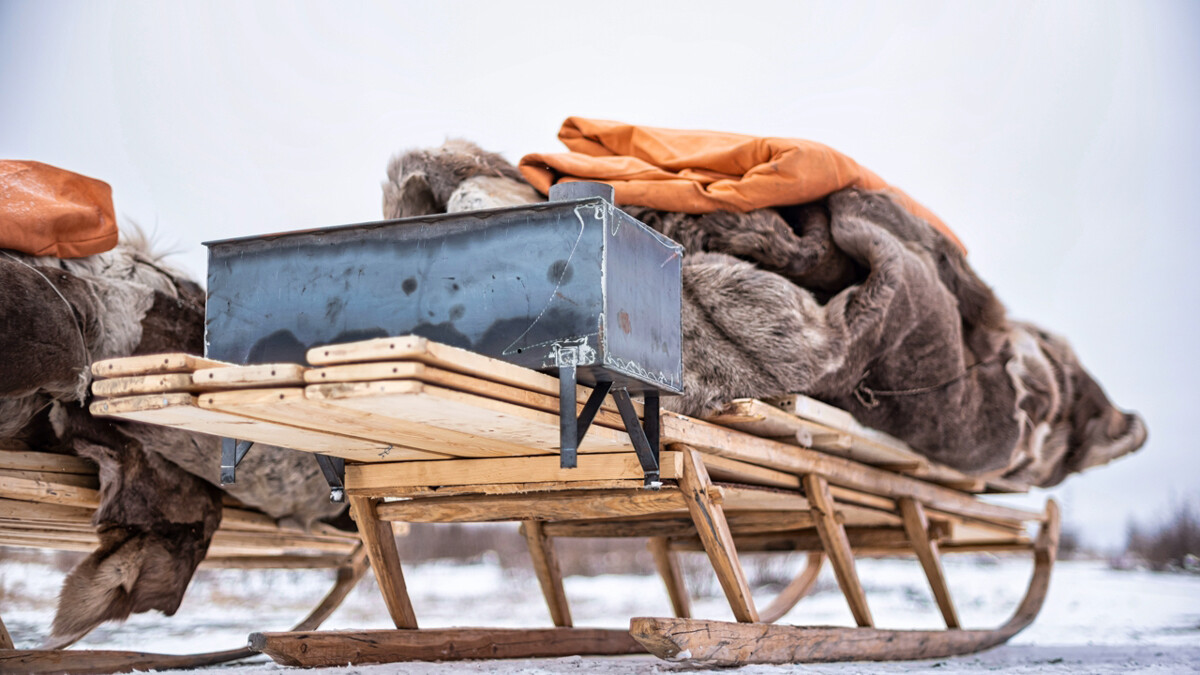
This is how the 'chum capital' looks like.
Yamalo-Nenets Autonomous Okrug Governor's Press ServiceNomad families that have three children or more receive a chum assembly kit. It includes a stove, poles, floor boards, hides, tarp and sleds. The total value is equal to roughly 500,000 rubles (approx. $5,140) and it’s given only once.
The Tver Region package, apart from clothing and hygiene products, has many useful little things: a bottle heater, scissors, combs, a bottle cleaning brush and pacifiers.
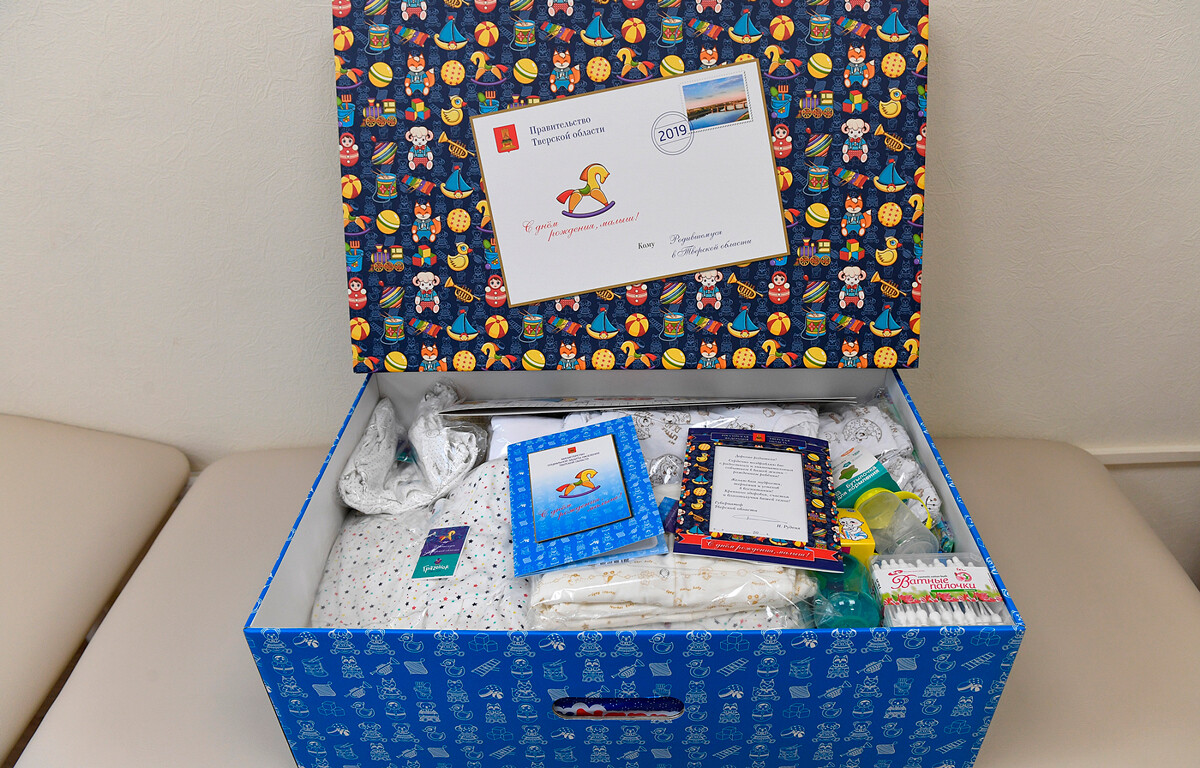
In Samara Region, such packages are given only for the first child; and in Tatarstan and Yakutia – only to low income families.
In some regions of Russia, when the mother is released from the maternity hospital, the families are given certificates instead of packages, which they can spend on baby items. For example, in the Khanty-Mansi Autonomous Okrug, you are given a gift card with a little mammoth depicted on it, worth 20,000 rubles (approx. $205).
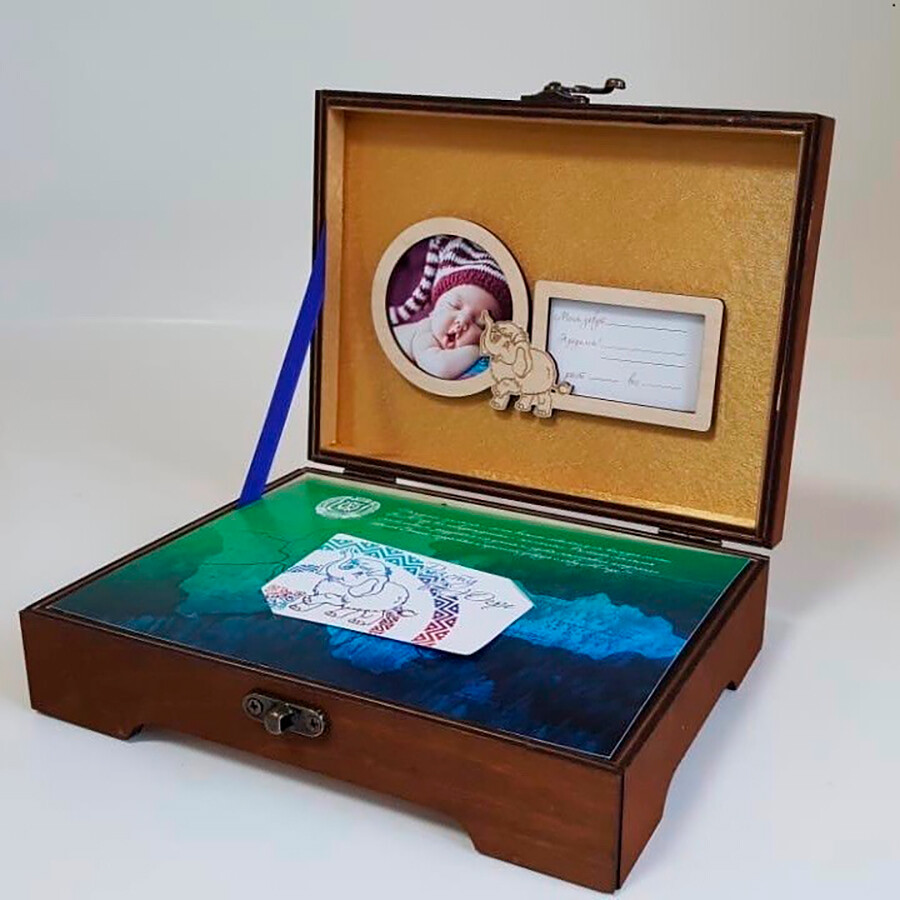
In St. Petersburg, regional payments are sent to a ‘Detskaya’ (‘Child’) card, with which you can pay for purchases both in specialized stores and at hypermarkets that have children’s sections. In 2023, the payment amounts range from 39,000 rubles (approx. $400) to 65,000 rubles (approx. $670), depending on the amount of children.
If you live in Perm Territory and you had twins (or more than two kids at once), then, apart from a gift package, regional authorities will give you 122,000 rubles (approx. $1,250) per child.
In Volgograd, women who have given birth to their first child before the age of 24, apart from federal payments, receive 50,000 rubles (approx. $514) from the region. The same sum is due for all women, regardless of age, who have had their second child and the first is still younger than three years. If the family has had a third child and they’re older than three years, the family is eligible for a ‘parental capital’ worth 70,000 rubles (approx. $720).
Families with a lot of kids (three or more) in Russia can even receive a plot of land in the region where they live. But, the conditions of receiving one always differ.
For example, in Moscow Region, only a family that doesn’t own a plot of land yet can receive one. In Rostov Region, only low income families can receive a plot of land. In Krasnoyarsk Territory, families receive it in queued order, however, the plots are not given in the city of Krasnoyarsk itself, but further out. In some regions, instead of a plot, a money certificate is offered.
Dear readers,
Our website and social media accounts are under threat of being restricted or banned, due to the current circumstances. So, to keep up with our latest content, simply do the following:
If using any of Russia Beyond's content, partly or in full, always provide an active hyperlink to the original material.
Subscribe
to our newsletter!
Get the week's best stories straight to your inbox